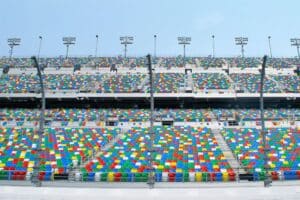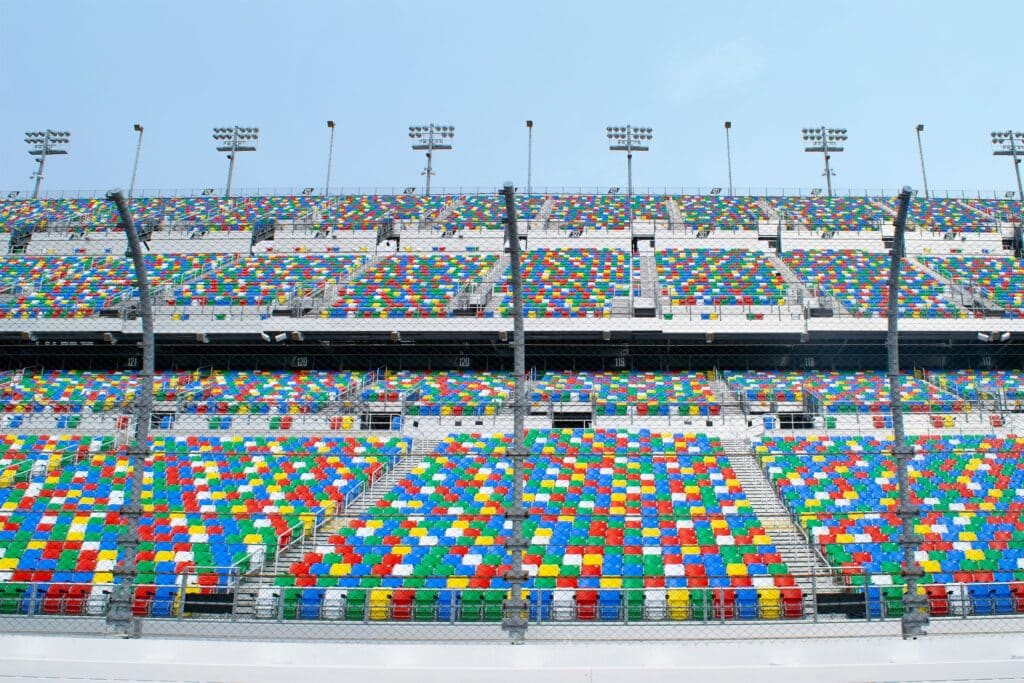No products in the cart.
History
A Vibrant Chronicle: The Storied Past of Talladega Superspeedway
 Title: A Vibrant Chronicle: The Storied Past of Talladega Superspeedway
Title: A Vibrant Chronicle: The Storied Past of Talladega Superspeedway
TALLADEGA, Ala. – The hallowed asphalt of Talladega Superspeedway has harbored a wealth of exhilarating moments, phenomenal achievements, and spellbinding narratives since its inception. As a gem of stock car racing, this colossal arena has etched its name into the annals of motorsports history, showcasing a panoply of nail-biting competitions that have left spectators awe-struck and breathless.
The concept of Talladega Superspeedway germinated in the fertile mind of Bill France Sr., a visionary who spearheaded NASCAR’s birth and relentlessly pursued its growth. In 1968, with ample experience under his belt, France resolved to bestow upon the motorsports world a racing facility that would dwarf its contemporaries. With this aspiration festering in his thoughts, he embarked on an ambitious endeavor, culminating in the construction of a sprawling 2,000-acre facility in Talladega, Alabama.
Talladega Superspeedway unfurled its majesty on September 13, 1969, with the inaugural Talladega 500, a race that proved to be as tumultuous as it was historic. The event unfurled amidst a tempest of controversy, as drivers expressed apprehensions about the perilous speeds and tire issues that plagued the nascent track. Nonetheless, the race soldiered on, immortalizing Richard Brickhouse as its first victor.
Throughout the ensuing decades, Talladega Superspeedway has morphed and evolved, continually augmenting its stature and allure. It has cemented itself as a superlative playground for racing legends, an arena where drivers exhibit unparalleled tenacity and skill.
The track’s intimidating 33-degree banking and 2.66-mile length imbue the Superspeedway with a distinctive character, one that demands the utmost from both drivers and vehicles. Its formidable layout has engendered breakneck speeds and record-breaking performances, such as Bill Elliott’s 212.809 mph qualifying lap in 1987, a feat that still stands as the fastest in NASCAR history.
Talladega’s tapestry has been interwoven with spine-tingling finishes, a testament to the unpredictable nature of the racing it hosts. The 2011 Aaron’s 499 epitomizes this, as Jimmie Johnson triumphed over Clint Bowyer by a razor-thin margin of 0.002 seconds, the closest finish in NASCAR history.
Moreover, the Superspeedway has witnessed myriad milestones that have cemented drivers’ legacies. Dale Earnhardt Sr. reigns supreme as the winningest driver at Talladega, boasting ten victories that encompass his storied career. His final triumph at the Alabama track came in 2000, a masterclass of strategic racing that saw him advance from 18th to first place in a mere four laps.
The Earnhardt family’s profound connection to Talladega persisted through Dale Earnhardt Jr., who accrued six wins at the legendary track, including an emotional victory in 2001, just months after his father’s tragic passing.
Talladega Superspeedway’s penchant for unpredictability extends beyond its thrilling finishes. It has also played host to the phenomenon known as “The Big One,” a massive, multi-car wreck that often ensues when vehicles jockey for position at breakneck speeds. The track has borne witness to a multitude of these chaotic events, exemplifying the inherent risks and rewards of racing at Talladega.



